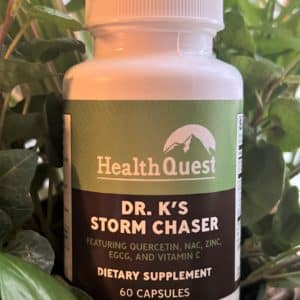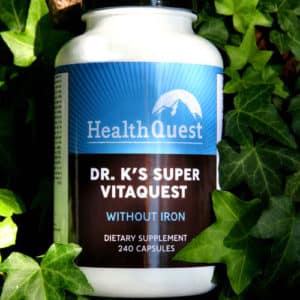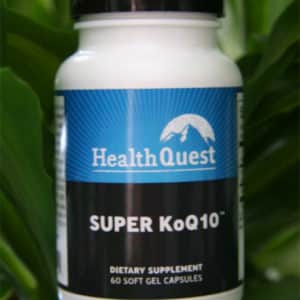Description
- Pan Plus™ – A true combination of nutrient supplements backed up by the best scientific studies! Other products on the market today, use Gymnema or Vanadyl Sulfate to maintain blood sugar levels already within the normal range. However, no other product uses correct scientific dosages of those ingredients plus a higher performance dose of 300 mg lipoic acid, which has been shown to benefit specific people who are in greater need. Used for over 30 years in Europe for maintaining blood sugar levels already within the normal range, these ingredients offer the most well-rounded scientific combination of natural ingredients available!
Diabetes is a powerful killer disease. It is a metabolic disorder, which means that food can be considered either a poison or a therapy depending on its content. Prevention of such a disease is a must! The natural components found in our Pan Plus have shown a remarkable success rate for patients who are striving to maintain optimal blood sugar levels.
Pan Plus contains trace minerals, like Vanadium and Chromium that help regulate blood sugar. The same ingredients in Pan Plus, also supports your cardiovascular health. With diabetes and coronary heart disease in the top of the killing disease list, it makes perfect sense to supplement your daily diet with
Pan Plus!Pan Plus™
(Pancreatic Plus)
60 vegetable capsules
Serving size = 2 capsules
Servings per container = 30Pan-Plus
- Helps to sustain and maintain normal blood sugar levels.
- Supports cardiovascular health with trace minerals cinnamon and vanadium. Cinnamon is one of the more recently researched natural substances that shows great potential for reducing the risk of diabetes and associated cardiovascular disease. Vanadium has demonstrated insulin-like effects on glucose metabolism.
- Supports current societal metabolic trends
- Pan Plus is optimally dosed for 300 mg of the active ingredient, lipoic acid
- OUR Pan Plus contains clinical doses of all active components using the best and most effective ingredient sources available
Dr. K’s Recommended Dosage:
Take 2 capsules, twice a day for the first bottle. Thereafter, take 2 a day; 1 capsule between breakfast and lunch, and 1 capsule between lunch and dinner.Please give us a call to discuss any concerns you may have about taking this product. The HealthQuest Hotline Number is 1-800-794-1855 for more information.Contraindications:
Do not exceed the recommended dosage. Do not take if you are pregnant or nursing. Pan Plus may cause nausea and gastrointestinal disturbances, in less-than-healthy individuals.
The Food and Drug Administration has not evaluated these statements. These products are not intended to diagnose, treat, cure, or prevent any disease. Consult a physician before taking. Should you experience any serious physical side effects from taking these nutritional supplements, discontinue and call your doctor immediately.
Nutritional Support for Normal Blood Sugar
Along with adequate exercise and a healthy diet, low in sugar and refined carbohydrates, specific nutrients and herbs are also effective for blood sugar and blood lipid management. The most effective and best researched ingredients are contained in our Pan Plus nutrient supplement.
Specifically:
- Vanadium has been found to have insulin-like effects on glucose metabolism. It has been used clinically to help manage blood sugar levels.
- Chromium is a key constituent in the molecule known as glucose tolerance factor (GFT). GFT facilitates the uptake of glucose into cells in conjunction with insulin. Research shows that non-insulin dependent diabetic patients have a compromised chromium status, when compared to healthy patients.
Lipoic Acid
- Once known as thioctic acid, lipoic acid is considered one of the most versatile antioxidants. Lipoic acid is able to recharge the antioxidants vitamin E, ascorbic acid (vitamin C), and glutathione. Lipoic acid modulates glucose and insulin sensitivities. It also acts as an antioxidant, decreasing oxidative stress which is the main stimulus for diabetic complications.
- Cinnamon is widely used for glucose support. The constituents known to give cinnamon its glucose supporting activity are called Type A polymers. In human studies cinnamon has been shown to lower blood sugar and improve insulin resistance too. Studies have also found improvements in fasting blood sugar levels when cinnamon supplementation is implemented. USDA studies show cinnamon promotes glucose metabolism and supports healthy cholesterol levels in individuals with type 2 diabetes. However, researchers note that when consumed consistently or in high doses, whole cinnamon and fat-soluble extracts may be toxic. Cinnulin®, a 20:1 water extract of cinnamon, retains the active components without the potentially harmful compounds, making it completely safe for every day use. Cinnulin® is the only cinnamon extract standardized for the recognized active component in cinnamon, double-linked Type-A Polymers.
- Biotin is an essential B vitamin, meaning humans cannot make their own biotin; therefore, it must be ingested through the diet. Biotin has often been overlooked in the support of healthy blood glucose levels. Biotin has been found to enhance insulin sensitivity and improve glucose and insulin tolerances.
- Gymnema Sylvestre is a woody plant that grows in Africa. Its beneficial properties are thought to reside in a group of compounds called gymnemic acids. Gymnema extracts are associated with improved pancreatic function and insulin release.
Diabetes
Diabetes is a leading cause of death among Americans and over 10 million Americans are diagnosed with some form of diabetes, while another 5 million are considered to be diabetic without their knowledge. Our modern Western diet and lifestyle has done much to lead our generation to the threshold of insulin resistance. A growing number of our children today are suffering from what has been known in the past, as the adult onset form of diabetes. In other words, more children are getting adult onset diseases than ever before!
Diabetes is a metabolic disorder characterized by elevation of fasting blood sugar (glucose). Complications of uncontrolled blood sugar include increased risk of heart disease, stroke, kidney disease, blindness, and a decrease in circulation. Regulating blood sugar for diabetics is therefore crucial to both the immediate as well as long-term care of diabetic patients.
The most common mistake that doctors make in treating their diabetic patients is starting them on medication without first making necessary lifestyle changes and utilizing a targeted nutritional approach. And if the medication is initially effective in controlling the blood sugar, then the patient may not establish essential lifestyle changes or improvements to help prevent future problems. People should be aware of the fact that the benefit of blood sugar medication, at best, is temporary, and only lasts for a period of time, because this disease progresses.
Syndrome X and Insulin Resistance
Syndrome X is the name given to a collection of metabolic conditions; highlighted by insulin resistance, but also includes obesity, (especially in the abdomen), high cholesterol, low HDL, “the good cholesterol”, high triglycerides and hypertension. These symptoms are often termed pre-diabetic syndrome. Insulin resistance is one of the key features and dangers of this syndrome. Insulin resistance is a condition where the pancreas is able to manufacture more than enough insulin, but cells have become resistant to insulin’s effects. The constant intake of refined carbohydrates, leading to dramatic spikes in blood glucose followed by dramatic spikes in insulin secretion, is the primary cause of insulin resistance and then Type II diabetes.
Type 1 Diabetes
Often called insulin dependent diabetes mellitus (IDDM), this form of diabetes is characterized by the destruction of the pancreatic beta cells that manufacture insulin. Typically this form is diagnosed while the patient is a child or adolescent and requires insulin for the management of blood sugar. Many theories have attempted to account for the damage of these important insulin-producing cells including autoimmune processes, chemical damages, viral infection and genetic disposition.
Type 2 Diabetes
Almost 90% of diabetics are considered to have non-insulin dependent diabetes mellitus (NIDDM) or type 2 diabetes. While also characterized by high blood glucose levels, type II diabetics often have high, rather than low, levels of serum insulin. Type 2 diabetics are typically insulin resistant, rather than insulin depleted. Additionally, there are a number of natural ingredients that can prevent and even reverse the progress toward these devastating complications.
Diabetic Complications
Hyperglycemia (high blood glucose) causes complications in patients with diabetes, regardless of whether it is Type 1 or 2. While some complications can be of an acute nature (ketoacidosis due to low insulin or hypoglycemic shock due to insulin overdose), most complications are a result of years of unregulated and high serum glucose. These complications include increased heart disease, retinopathy, nephropathy ending in kidney failure, nerve damage, foot and leg ulcers, impotence, and the inhibition of many important metabolic enzymes.
Syndrome X and Insulin Resistance
Syndrome X is the name given to a collection of metabolic conditions; highlighted by insulin resistance, but also includes obesity, (especially in the abdomen), high cholesterol, low HDL cholesterol, high triglycerides and hypertension. These symptoms are often termed pre-diabetic syndrome. Insulin resistance is one of the key features and dangers of this syndrome. Insulin resistance is a condition where the pancreas is able to manufacture more than enough insulin, but cells have become resistant to insulin’s effects. The constant intake of refined carbohydrates, leading to dramatic spikes in blood glucose followed by dramatic spikes in insulin secretion, is the primary cause of insulin resistance and then Type II diabetes.
Essential Fatty Acids
The role of essential fatty acids is critical in the overall health of diabetics as it is with all individuals and leads to the therapeutic benefit of ingesting gamma-linolenic acid (GLA)-rich oils such as borage and evening primrose. The greatest benefits of gamma-linolenic acid supplementation are increased nerve conduction and the improvement of skin related disorders. The benefits of Omega-3 fatty acids from fish oil supplementation in diabetic patients is their relationship to the cardiovascular system, an area which diabetics are vulnerable due to increased lipid disorders. The reduction of oxidized and trans-fatty acids and the increase of high quality essential fatty acids should be a goal for everyone, but especially for those who have, or are susceptible to Syndrome X and Type 2 Diabetes. (Little Fish Oil, Quad Care)
Diet and Lifestyle Are Vital
Since diabetes is a metabolic disorder, food can be considered either a poison or a therapy depending on its content. The steady balance or glycemic control is the key to prevent and treat syndrome X and type 2 diabetes. Avoiding foods that destabilize glycemic balance and eating foods that promote glycemic balance is the key to a healthy diet for everyone, but especially for those with insulin resistance.
Adding supplemental fiber to the diet, in the form of a psyllium or similar product can be an excellent way to keep and maintain glycemic control. Increases in soluble dietary fiber will promote healthy bowel transit times and benefit the gut micro flora as well. (Healthy Handouts: Glycemic Index)
General Guidelines
- Understand that the glycemic index and total carbohydrates may differ dramatically
- Avoid most processed foods regardless of their protein-carbohydrate ratio.
- Avoid trans-fatty acids and increase omega-3 fatty acids and GLA (Little Fish Oil)
- Increase dietary fiber
- Avoid or test for commonly allergenic foods such as dairy and gluten (wheat, rye, oat, etc.)
- Avoid refined sugar in all its forms
- Avoid alcohol
- Avoid artificial sweeteners like aspartame – try stevia or xylitol instead (HQ Radio show: Going Negative)
- Drink plenty of pure water (Water, Our Most Precious Resource)
- Don’t assume anything – read the label
- Exercise daily
Lifestyle factors are essential for those with diabetes or syndrome X. Exercise and stress management are vital. In a recent study, exercise had significant improvement on the vascular function in type 2 diabetics. It should be noted that patients taking pharmaceuticals to reduce blood sugar or insulin should be monitored during exercise to prevent hypoglycemia. Typically, less hypoglycemic medication is required during physical activity.
Do You Know Your Cortisol Levels?
Another key factor is the management of stress. Along with the pancreatic production of insulin, the adrenal glands are important in the regulation of blood sugar. The adrenal hormone cortisol is stimulated whenever the body is “under stress”. Whether this stress comes from mental or emotional stress, chronic inflammation, food allergies, or low blood sugar; cortisol effectively raises blood glucose levels by stimulating gluconeogenesis. This raised glucose level can exceed desired levels when stress-induced cortisol levels are extremely high (alarm reaction). Chronic glycemic imbalance or other stress could then result in both reduced insulin sensitivity and adrenal exhaustion. Studies have shown that glycemic control of diabetics with higher measurable stress is worse than those with lower measurable stress and, additionally, techniques to reduce stress lead to better glycemic control among diabetic patients. Reports have also directly linked the function of the hypothalamic-pituitary-adrenal axis with the risk of type 2 diabetes. An excellent way to determine adrenal stress is by measuring salivary cortisol throughout a single day. (Magnum pH, ASI Test)








Reviews
There are no reviews yet.